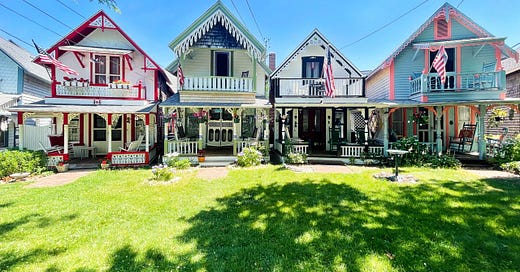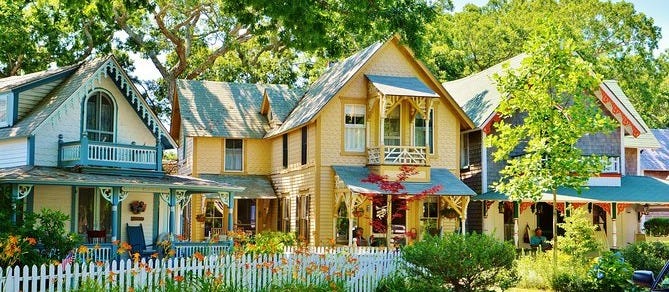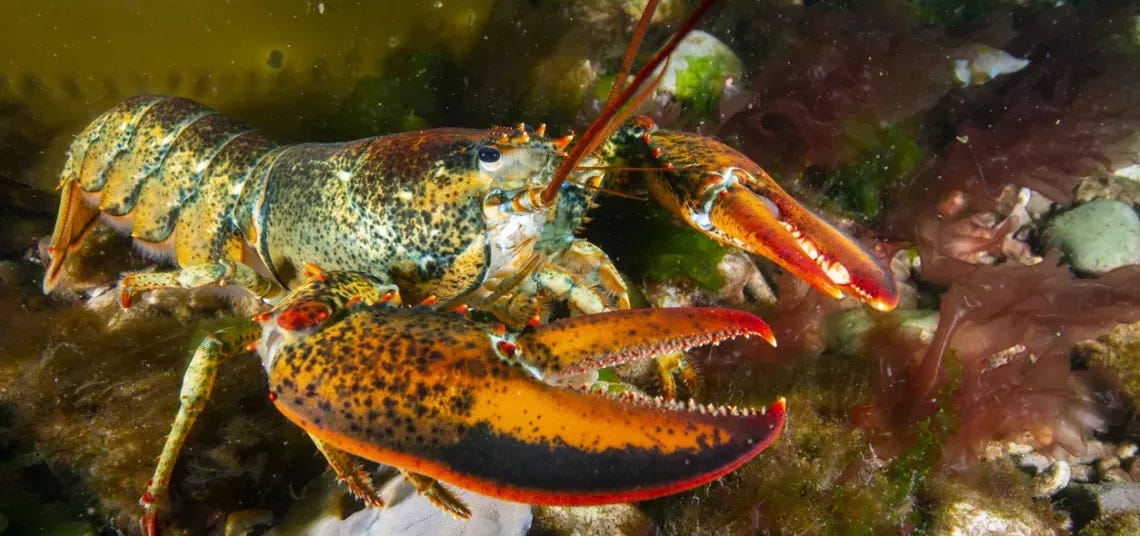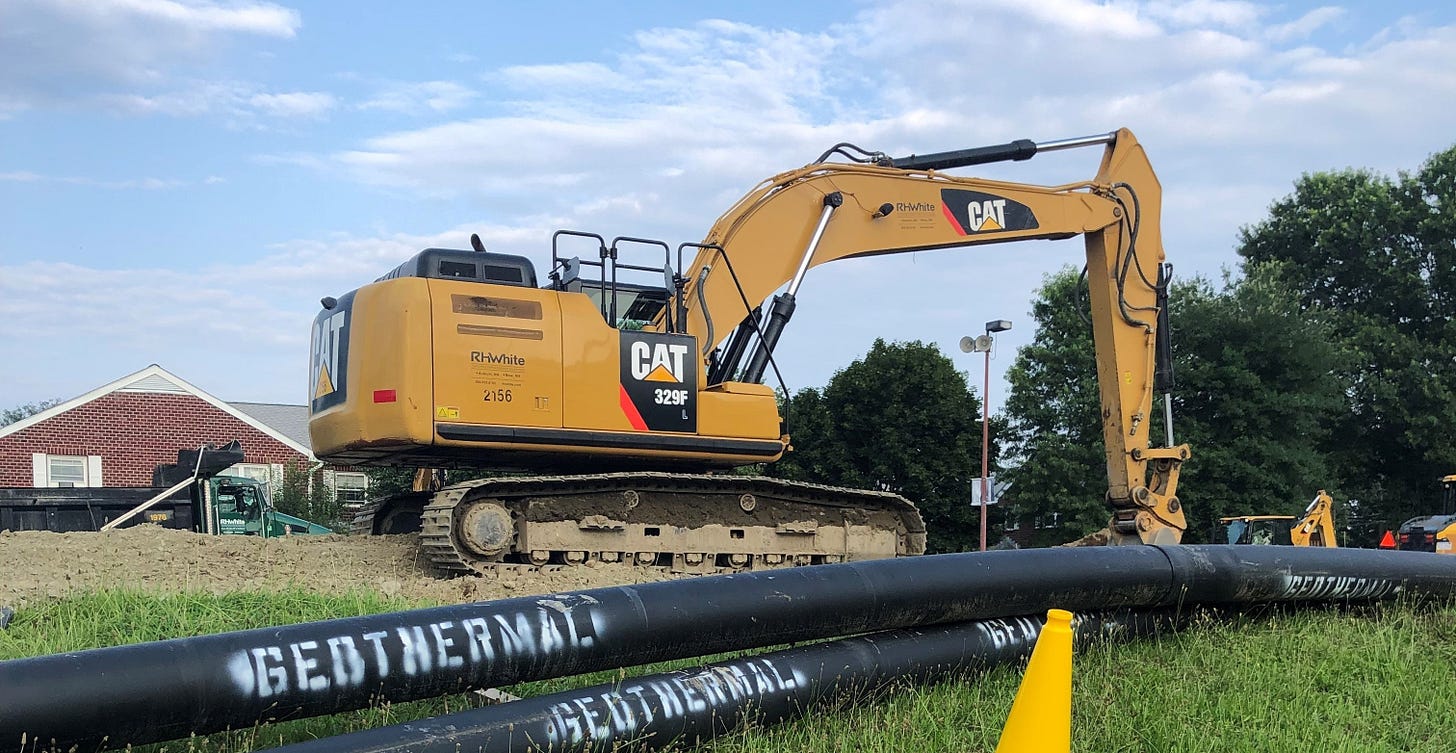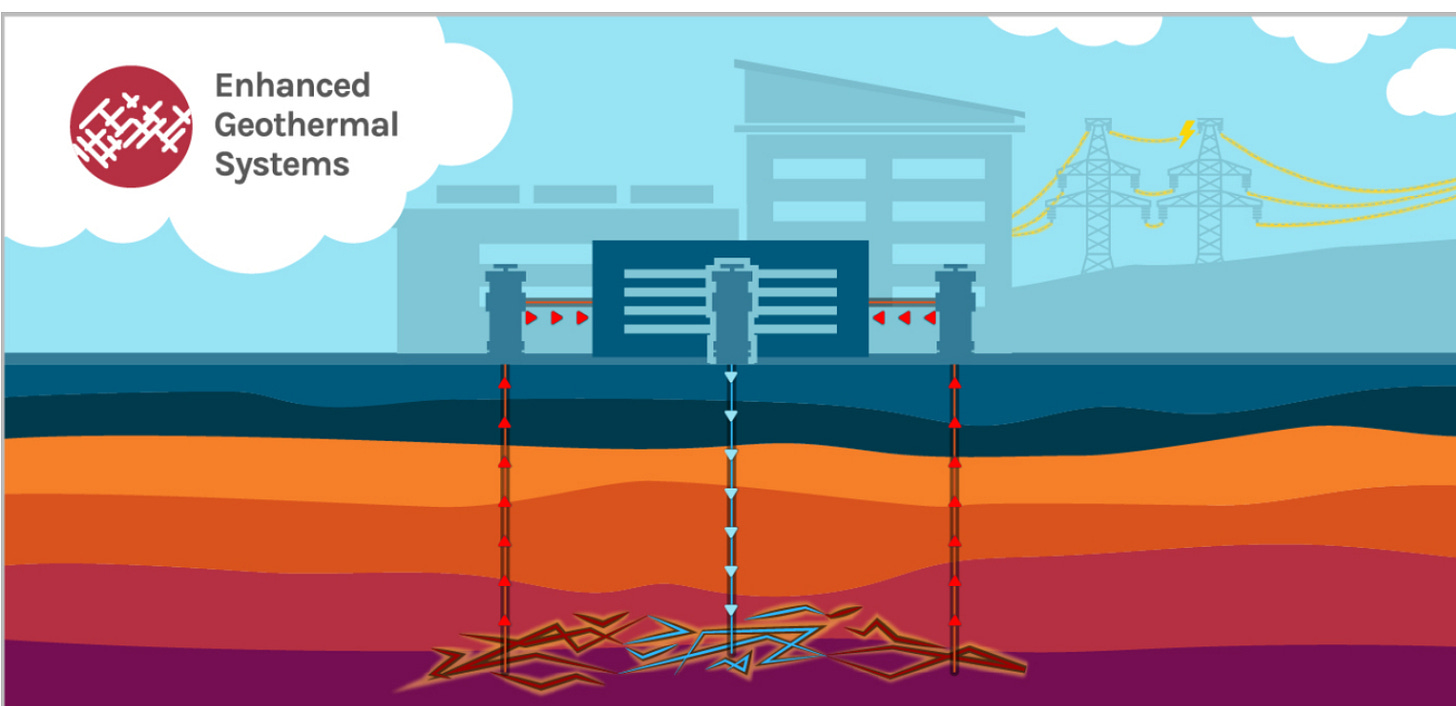Feb 21: Lobster baby bust explained, and the growing promise of geothermal
Also, homeowner's insurance rate hikes hit Martha's Vineyard
NOTE: The table of contents items below are linked to the articles, but this feature only works if you are reading the post in Substack while logged in - apologies for the inconvenience.
In this issue:
Cape & Islands
Layoffs at Vineyard Offshore wind project due to Trump’s ban on permitting
Climate change drives massive increases in homeowners insurance on Martha’s Vineyard
Scientists uncover reasons behind Gulf of Maine baby lobster bust
Massachusetts
Networked geothermal still holds promise for heating and cooling, despite setback in Lowell
Job opportunities in geothermal drilling: former oil driller training the workforce
United States
Because we all need some good news, there’s still geothermal
Drill, baby, drill! Enhanced geothermal projects could scale greatly as costs decline
Innovation leads to cost reductions at enhanced geothermal company, Fervo Energy (Volts podcast)
US Fish and Wildlife Service: Trump’s job cuts at this overlooked agency put every American at risk
Events and Activities
In person event Woodwell Climate Research Center coming up, plus virtual discussions
Conservation Calendar — great outdoor and indoor activities this week
Cape & Islands
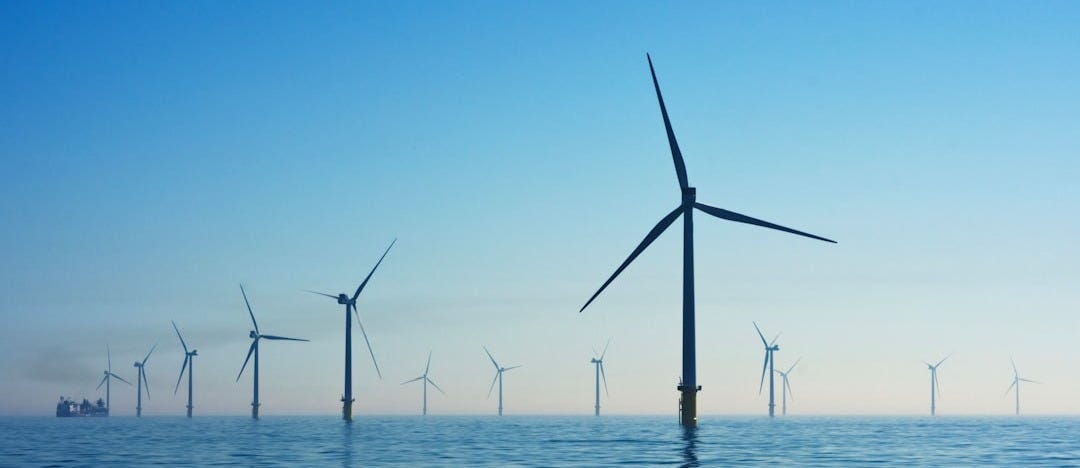
Fallout from Trump’s ban on new offshore wind permits and leases: Vineyard Offshore cuts 50 jobs
CAI | By Jennette Barnes, Feb 18, 2025
A company spokesperson confirmed that Vineyard Offshore has laid off employees and contractors and cut unfilled positions to reach a total of 50 job cuts in the United States and Europe.
“In an effort to position our projects for sustainable long-term success we have made the difficult decision to reduce our current team size in light of recent market uncertainties,” the spokesperson said in an email. “We look forward to continuing to advance these transformative American energy projects in the years ahead.”
It’s unclear how many of the layoffs are in Massachusetts; the company has offices in New Bedford; Boston; Uniondale, New York, on Long Island; and Eureka, California.
Vineyard Offshore is one of two parent companies of Vineyard Wind, the first offshore wind farm to operate with a Massachusetts contract. The company says no Vineyard Wind staff or contractors are part of the layoffs.
“The Vineyard Wind project, including its staff and contractors, remains unaffected by Vineyard Offshore’s changes,” the spokesperson said. “Its shareholders are fully committed to ensuring the project's successful completion.”
At Vineyard Offshore, some U.S. employees were reassigned to projects outside the country, the spokesperson said. Vineyard Offshore is an affiliate of Copenhagen Infrastructure Partners, a renewable-energy investment company based in Denmark.
The move follows President Trump’s executive order, on his first day in office Jan. 20, halting permitting for offshore wind. Full story.
Climate change driving huge jump in home owners insurance on Martha’s Vineyard: Opening up uncertainty
MVTimes, by Sarah Shaw Dawson, Feb 19, 2025
Robert Fynbo was raised in that house until 1986, when he excitedly bought the home from his mother. He remodeled it himself, and raised his own family within the comfort of its walls.
As he sat in that same house fifty-nine years later, he couldn’t believe what he was reading from the renewal notice: he didn’t see the usual 5 or 10 percent markup on his insurance premium. Instead, he was quoted a more than 360 percent increase.
These premium increases have been seen across areas of the country that are most vulnerable to global climate change, which scientific consensus says is fueled by manmade greenhouse gases that trap the sun’s heat and disrupt usual weather patterns. With damage done by natural disasters across the country — like the hurricanes in Florida and wildfires in California — costs are rising for everyone.
But Vineyard residents are seeing perhaps the worst of it. As part of an informal survey produced by The MV Times earlier this year, a quarter of the approximately 300 respondents said their insurance premiums increased by more than 50 percent in recent years, while only 2 percent said their insurance had not increased. Full story.
More on homeowners insurance: rates increasing across the board
Brookings report, by Meredith Fowlie, Judson Boomhower, Daniel Richter, and Riki Fujii-Rajani, Jan 14, 2025
Across the country, average homeowners insurance premiums have increased by more than 30% between 2020 and 2023 (13% adjusted for inflation). Some insurance companies have stopped writing policies in some areas.
Report sections:
What explains the increase in homeowner’s insurance premiums?
Climate change presents challenges for insurance market regulation
What lies ahead, and what are the possible policy interventions?
Out of sync: Scientist uncover reasons behind lobster baby bust in Gulf of Maine
Biographic, by Moira Donovan, Feb 19, 2025
Right now, lobsters seem to be thriving in the Gulf of Maine. The adult population is near its record high, and commercial landings have been largely growing for decades. But since 2012, scientists studying the crustaceans have struggled to answer a worrying question: Where are all the young lobsters?
Unlike butterflies, lobsters metamorphose several times. One of the most important transformations is when developing larvae give up living as free-floating plankton and settle on the seafloor to grow into adults.
Despite the Gulf of Maine’s prevalent warming, rising temperatures couldn’t directly explain the lack of juvenile lobsters. Neither could recent changes in the wind or the currents. Nothing seemed to be eating the larval lobsters in huge numbers, either.
But when Joshua Carloni, a marine biologist with the New Hampshire Fish and Game Department, and his colleagues looked at the relationship between juvenile lobsters and a certain single-celled zooplankton—a sesame seed-sized copepod known as Calanus finmarchicus—they had their answer loud and clear.
Warming temperatures have been making American lobsters hatch earlier in the year. C. finmarchicus’s seasonal cycle has been thrown off, too: They’re spawning at the same time they used to but are vanishing sooner. “The entire season of Calanus has been truncated,” Carloni says. “They’re coming out and then disappearing early.”
Combined with an ongoing decline in C. finmarchicus abundance, which has dropped by about 70 percent during the lobster larval season since the late 1990s, the result of this mismatch is that by the time larval lobsters are ready to feast, the copepods are already gone. The seasonal cycle powering the Gulf of Maine’s lobster population has slipped out of sync. Full story.
APCC — Action Alert
Deadline is March 3 for public comments: new terms for Clean Water Revolving Fund pose problem for water quality projects on Cape
From APCC: The Massachusetts Department of Environmental Protection (DEP) has proposed changes to the financing of wastewater projects through the Clean Water State Revolving Fund Intended Use Plan (IUP) that, if implemented, will impede water quality improvement efforts. APCC has submitted comments and encourages you to take minute and do the same.
Written testimony will be accepted until March 3, 2025 at 12:00 p.m. Please submit comments by email to srfmadep@mass.gov with “2025 Draft IUP Testimony” in subject line. More information.
Massachusetts
Despite setback in Lowell, networked geothermal still holds promise
The recent cancellation of a Massachusetts networked geothermal project isn’t dampening enthusiasm for the emerging clean-heat strategy.
National Grid said this month it has abandoned a planned geothermal system in Lowell, Massachusetts, due to higher-than-expected costs.
Meanwhile, the Framingham network began hooking up its first customers in August 2024 and now has about 95% of its anticipated load up and running, said Eric Bosworth, clean technologies manager for Eversource. The system is performing well, keeping customers warm even when a recent cold snap dropped temperatures down to 6 degrees Fahrenheit, he said.
Plans are already underway to expand the system. The U.S. Department of Energy in December awarded Eversource, the city of Framingham, and HEET a $7.8 million grant to develop a second geothermal loop to be connected to the first network, in the process generating valuable information about expanding and interconnecting geothermal systems. The grant is still under negotiation with the federal agency, so it is unclear what the final terms will be. Still, Eversource hopes to have the second system installed in 2026.
“What we’re trying to prove out with Framingham 2.0 is, as we expand on an existing system, that we can do it more efficiently and bring down that cost per customer,” Bosworth said.
The widespread interest in networked geothermal systems within Massachusetts and throughout the U.S. is also promising, Camargo said. In Massachusetts, National Grid is continuing work on a different geothermal network pilot serving seven multifamily public housing buildings in the Boston neighborhood of Dorchester. Last year, HEET, with support from the Massachusetts Clean Energy Center, awarded $450,000 in grants to 13 communities to conduct geothermal feasibility studies. And a climate law passed in Massachusetts last year authorizes utilities to undertake networked geothermal projects without getting specific regulatory approval to veer out of their natural-gas lane. Full story.
A Third Generation Driller Transitions from Oil and Gas to Geothermal
Brock Yordy, a co-founder of the Geothermal Drillers Association, says the industry needs more drillers for geothermal heating and cooling to take off.
Inside Climate News, By Phil McKenna, Feb 17, 2025
PHIL MCKENNA: You co-founded the Geothermal Drillers Association in April. Why start a trade association specific to geothermal drilling?
BROCK YORDY: If you look at the Liftoff report, it says 80 million homes by 2050, and as I started playing with those numbers, it’s a lot of boreholes. We could have 21,000-plus drill rigs and crews. And if you put two to three individuals on a crew, you’re looking at increasing the current workforce two- to three-fold—from less than 20,000 to somewhere between 40,000-60,000—to make this work.
MCKENNA: You recently held a training in Boston. Can you tell me more about that?
YORDY: We put on an 80-hour drilling tutorial in September to take seven individuals that had never been part of the drilling industry. When they left, they were ready to go work for a drilling company in an entry-level role.
MCKENNA: You said in a recent presentation that many construction workers in the U.S. look like you, a white male from the Midwest. Who did you train and why?
YORDY: They were all individuals of color from the areas that we should be drilling in Boston, including a project that is planned with the Boston Housing Authority. It was a great opportunity to inspire this new generation to step in and find the right companies to hire them and get them on a trajectory that could become a great family-sustaining career.
If I am in a densely populated area and there are drill rigs and construction slowing traffic down, but I can look up and I can say, “Hey, that’s my cousin,” or, “That’s my dad up there in that excavator,” that will empower the community to do this. This is the only way it’s going to be successful. Full story.
United States
Enhanced geothermal projects could scale greatly as costs decline
PV Magazine, by William Driscoll, Feb 18, 2025
A team of researchers and industry participants predict a significant near-term energy contribution from enhanced geothermal projects, saying in a journal article that the technology could provide “stable baseload and potentially dispatchable electricity.” Full story.
Enhanced geothermal systems for clean firm energy generation
by Roland Horne, Albert Genter, Mark McClure, William Ellsworth, Jack Norbeck & Eva Schill
Nature Reviews Clean Technology volume 1, pages148–160 (2025) Cite this article
Geothermal energy provides clean, steady and renewable electricity and heat, but the use of geothermal energy has conventionally been constrained to locations with adequate subsurface heat and fluid flow. Enhanced geothermal systems (EGS) enable geothermal energy usage in unconventional areas by enhancing the subsurface permeability and increasing fluid flow, which is then extracted as a carrier of the thermal energy.
Several EGS projects operate commercially in Europe. Around 20 well-to-well circulation EGS projects have been developed, but most operate for research purposes or produce modest amounts of energy (a few megawatts electrical or a few tens of megawatts thermal).
There have been reductions in drilling time and therefore cost in EGS projects developed in the 2020s. Adaptation of oilfield drilling strategies has shortened EGS drilling times by 50–70%.
Owing to innovation, EGS is expected to be scaled to much larger projects (for example, hundreds of megawatts electrical) at a cost that is competitive with other sources of electricity. Full article.
Innovation leads to cost reductions at enhanced geothermal company, Fervo Energy
US Fish and Wildlife Service: Trump’s job cuts at this overlooked agency put every American at risk
A “wholesale decimation of expertise” threatens the natural resources we all rely on, a former top government official tells Vox.
Vox, by Benji Jones, Feb 21, 2025
The Trump administration has fired hundreds of employees at the already short-staffed US Fish and Wildlife Service (FWS) — the only government agency whose main goal is to conserve animals, ecosystems, and the life-supporting services they provide. Late last week, the Service terminated around 420 employees who were newly hired or recently promoted, amounting to about 5 percent of the agency’s workforce, as part of a sprawling government purge.
Martha Williams, who led the FWS under the Biden administration, in conversation with Vox’s Benji Jones:
“What keeps me up at night is the wholesale decimation of expertise and of our approach to conservation. Our superpower was that we collaborated with states, with tribes, with local governments, with NGOs. We never had a big enough budget to do anything on our own. Everything the Fish and Wildlife Service does was working with communities — was building community. And so coming in and slashing this work hurts people. It hurts communities. It hurts nature. It took decades and decades to build this collaborative approach that can be decimated in the blink of an eye.” Full story.
Leaving this up, just because.
"Everyone thinks of solar like the Whole Foods of energy - better for you, but pricey. In fact, it's now the Costco of energy, and everyone needs to know that."
— Bill McKibben, @billmckibben.bsky.social
Activities and Events

Feb 25, Virtual — Canary Media, Boon or bane: What will data centers do to the grid?
After years of relative stability, the U.S. grid is suddenly facing a surge in power demand. The reason? Tech firms plan to rapidly build new data centers to support their AI ambitions, and that’s going to require incredible amounts of electricity.
Free. Register here.
📅Feb 25, 2:00 to 3:00 pm 🗺️📌 On zoom
Feb 26, In Person — Woodwell Climate Research Center, Life in the Pyrocene, Wildfire science for solutions from the Arctic to the Amazon
Fueled by climate warming and land use, wildfires are a growing threat to climate, people, and ecosystems around the world. From the Arctic to the Amazon, Woodwell scientists are working to develop technological innovations, engage fire managers, and inform policy for wildfire solutions.
Come learn more about the science and paths forward for managing wildfire in a warming world.
More information and registration here. Free.
📅Feb 26, 5:00 - 7:00 pm 🗺️📌149 Woods Hole Road, Falmouth, MA 02540
Feb 26, Virtual — RMI, Eliminating the Need for Mining EV Battery Minerals by 2050
Wednesday, Feb. 26, 12:30–2 p.m. ET (Virtual): York University is featuring RMI research in their upcoming webinar Eliminating the Need for Mining EV Battery Minerals by 2050: Data-driven Insights on Enabling an Efficient, Responsible EV Battery Supply Chain. New RMI analysis examines the potential for reductions in critical mineral extraction needed to support EV adoption and wider energy system transitions. Register for free here.
📅Feb 26, 12:30 - 2:00 pm 🗺️📌Virtual
Mar 25, in person — Climate Change: What Homeowners Should Know & What They Can Do
Hosted by the Orleans and Harwich Climate Action Networks, the Eastham Climate Action Committee
Cape Cod, jutting into the Atlantic Ocean, faces significant threats from climate change, but there are solutions, and you can be part of them.
Join Shelly McComb, Coastal Resilience Specialist for Cape Cod Cooperative Extension and Woods Hole Oceanographic Institution’s Sea Grant, to explore local and global coastal challenges. Shelly, with a background in environmental and sustainability studies, works directly on coastal resilience planning and will share practical strategies for strengthening our communities.
More information here.
📅March 25, 10:30 am - 12:00 pm 🗺️📌Snow Library, Orleans
A cloud watching stroll in Falmouth, winter sowing, and more — Check out the Cape Cod Conservation Calender HERE
Powered by the “Communications Cohort,” co-led by the Barnstable Land Trust and APCC.

